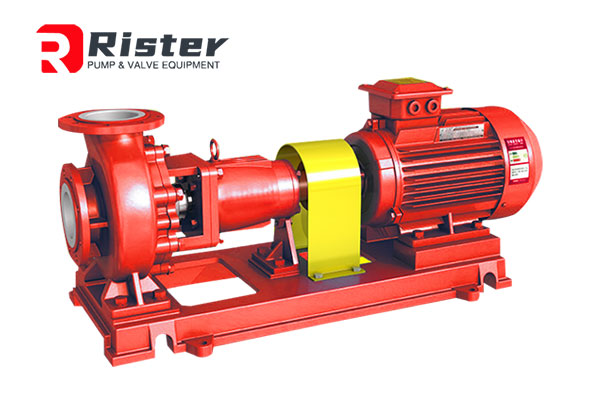Methods and solutions for leakage detection of chemical centrifugal pumps

Corrosion-resistant chemical centrifugal pumps are used to transport corrosive liquids in the chemical industry. corrosion-resistant chemical pumps include fluoroplastic pumps, stainless steel pumps, corrosion-resistant mortar pumps, etc., which are made of corrosion-resistant materials and have strong corrosion resistance. the chemical pump transports corrosive and toxic volatile media, so its sealing performance is one of the criteria to measure the quality of the chemical pump. The leakage of corrosion-resistant chemical pump has always been a problem, chemical pump will appear seal wear after long-term use, serious leakage will occur, so what is the solution? There are many kinds and types of mechanical seals for chemical pumps, but the main leakage points are: the seal between shaft sleeve and shaft; the seal between moving ring and shaft sleeve; the seal between dynamic ring and static ring; the seal between static ring and static ring seat; the seal between seal end cover and pump body.
1. Seal continuous leakage.
Possible causes: uneven surface; blistering of graphite sealing surface; thermal deformation of sealing surface.
Solution: in the process of installation, the secondary seal scratches, the O-ring ages, and the secondary seal becomes hard and brittle due to compression deformation. Due to chemical action, the auxiliary seal becomes soft and sticky.
2. Spring failure.
Possible causes: damage of metal accessories, corrosion of transmission mechanism.
Solution: check whether the installation size is incorrect, check whether the material is inappropriate, improve the flushing cooling pipe and sealing type, check whether the cover bolt torque deformation is too large, check whether the pressure of the gland gasket is appropriate, check whether there are other solid particles between the sealing surfaces, such as the need for polishing the sealing surface. Check the cracks on the sealing surface and replace the main sealing ring and matching sealing ring.
3. During the operation, the seal whistles.
Possible cause: insufficient amount of lubricating fluid in the seal.
Solution: add bypass flushing lines (if not available) and expand bypass flushing lines and / or gland openings.
4. There is a crack sound in the seal during operation (end face burst sound).
Possible reasons: the sealing liquid evaporates at the sealing interface; strengthening the cooling of the sealing surface.
Solution: add bypass flushing lines (if not available) and expand bypass flushing lines and / or gland openings.